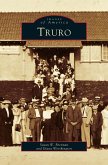It began quietly in 1842 as a utopian community known as the Dale of Hope on farmland that was then part of Milford. The followers of Rev. Adin Ballou settled in that year, sharing a farmhouse and chores, as well as ideals and abolitionist inclinations. After the longest-running utopian experiment in Massachusetts faltered, however, the community underwent a dramatic renaissance beginning in the 1850s. Within a few short decades, the Draper family became a driving force-instrumental in the community's separation from Milford, incorporation as Hopedale and development as the cotton loom-making capital of the Industrial Revolution. Hopedale contains more than two hundred photographs portraying life, leisure, and community spirit in Hopedale from the 1840s to the early 1960s. Included are the town's industrial center, public buildings, parks, unique duplex housing, and ostentatious mill-owner homes. Hopedale depicts the town undergoing times of prosperity and facing floods and other disasters. It also examines the citizens working hard, enjoying time off, and displaying their patriotism.
Hinweis: Dieser Artikel kann nur an eine deutsche Lieferadresse ausgeliefert werden.
Hinweis: Dieser Artikel kann nur an eine deutsche Lieferadresse ausgeliefert werden.








